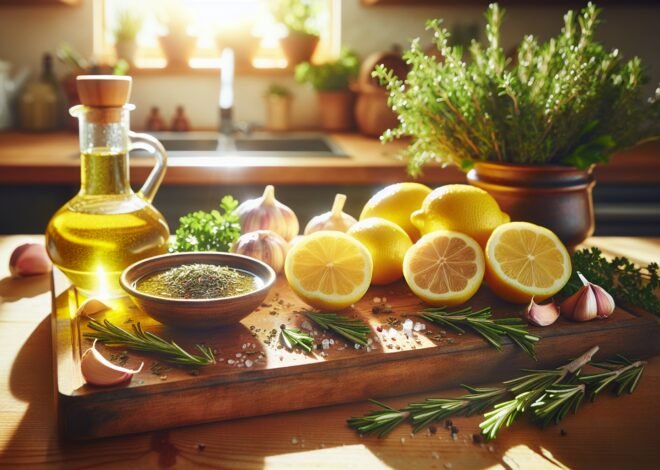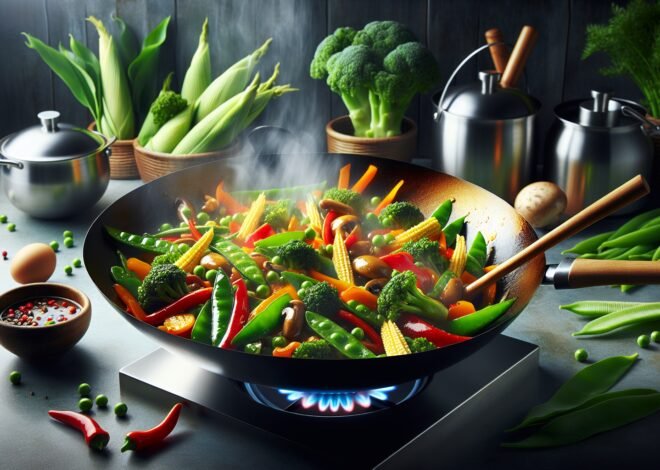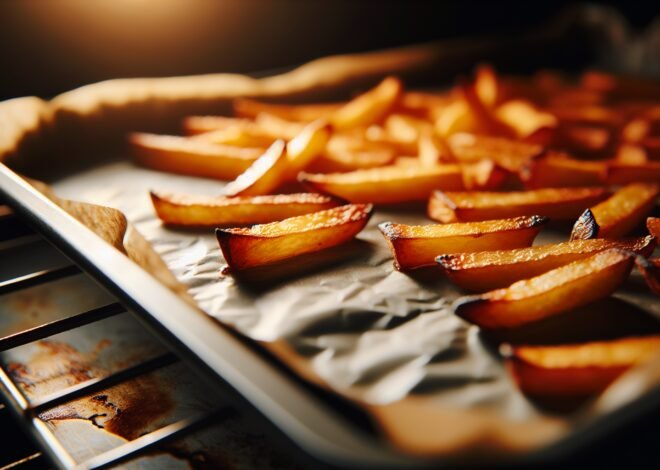
How to Grow Fresh Herbs at Home: A Beginner’s Guide
Grow fresh herbs at home is a rewarding activity that not only enhances your cooking but also adds greenery to your living space. Did you know that fresh herbs can grow indoors with as little as six hours of sunlight per day? This guide will walk you through the necessities of cultivating basil, mint, parsley, and other popular herbs, covering essentials such as choosing the right containers, understanding soil requirements, and maintaining appropriate light and water conditions. Whether you’re a seasoned horticulturist or someone looking to start a new hobby, these insights will make the process simple and enjoyable. Dive in and discover how to enrich your meals and life with fresh, homegrown herbs.
Introduction to Homegrown Herbs
Bringing the vibrant world of herbs into your home can transform your living space while offering a bounty of fresh flavors. Indoor herb gardening is a delightful and practical way to maintain a sustainable supply of herbs right at your fingertips. This section explores the many facets of growing herbs indoors, from their benefits to choosing the best varieties for your indoor garden.
Benefits of Growing Herbs Indoors
Growing herbs indoors offers numerous advantages that extend beyond mere convenience. Fresh herbs enhance the taste of your dishes, ensuring that your meals burst with flavor. They also purify the air, acting as natural air fresheners that improve your home environment. Indoor herbs provide a year-round supply of greenery, regardless of the season.
Another significant benefit is potential cost savings. Store-bought herbs can be expensive, especially if you prefer organic options. Growing your own allows you to enjoy a steady supply without frequent trips to the market. Moreover, herbs like basil, mint, and parsley can promote wellness through their medicinal properties, offering benefits that range from improved digestion to stress relief.
Essential Tools and Supplies for Herb Gardening
Setting up an indoor herb garden requires a few essential tools and supplies. Begin with quality pots that offer good drainage. Ceramic or terra cotta pots are ideal for retaining moisture and providing stability. Choose potting soil specifically formulated for herbs, which supports their unique nutrient and drainage needs.
Invest in a good pair of pruning scissors to keep your herbs in shape. A watering can with a narrow spout will help avoid overwatering and direct water to where it’s needed most. Finally, consider using grow lights if your indoor space lacks sufficient natural sunlight. These lights replicate the sun’s spectrum, ensuring your herbs receive adequate light for photosynthesis.
Choosing the Best Herbs for Indoor Gardening
Selecting the right herbs is vital for a thriving indoor garden. Start with hardy, low-maintenance varieties that adapt well to indoor conditions. Basil, mint, and oregano are excellent choices, known for their robust growth and versatility in cooking. If you’re looking for fragrant options, consider rosemary and thyme, which add aromatic elegance to your home.
Consider your culinary preferences when selecting herbs. If you often cook Italian dishes, oregano and basil will be indispensable. For teas, mint and lemon balm offer refreshing flavors. Evaluate the space available in your home, as some herbs grow more expansively than others, ensuring you accommodate their growth requirements.
Step-by-Step Guide to Planting Herbs
Planting herbs indoors is an engaging process that can quickly become a fulfilling hobby. With the right techniques and timing, you can establish a flourishing herb garden. This section provides a detailed guide on preparing soil, potting techniques, and the optimal conditions for planting, setting the foundation for success.
How to Prepare Soil for Herb Cultivation
Soil preparation is crucial in offering the best start for your herbs. Choose a high-quality potting mix designed for herbs, ensuring it provides good drainage and aeration. Herbs prefer slightly alkaline soil, so test the pH level and amend it with lime if necessary.
Incorporate organic matter like compost to enrich the soil with nutrients. This not only improves fertility but also enhances moisture retention, crucial for plant health. Mix the potting soil and organic matter thoroughly to ensure a consistent texture that supports root development.
The Best Potting Techniques for Herb Plants
Effective potting techniques ensure your herbs have ample room for growth. Begin by selecting pots with adequate drainage holes to prevent waterlogging. Fill the bottom of the pot with a layer of gravel to enhance drainage before adding the potting soil.
Transplant seedlings or sow seeds directly into the potting mix, maintaining appropriate spacing to allow air circulation and prevent competition for resources. Firmly press the soil around the plant base to secure them, and water gently until the soil is moist but not waterlogged.
Optimal Timing and Conditions for Planting Herbs
Timing is key when planting herbs. While they can be grown year-round indoors, spring is often the best time to start, as increased daylight supports robust growth. Position your herbs in a location that receives at least 6-8 hours of sunlight daily. If natural light is insufficient, supplement with grow lights.
Temperature also plays a critical role. Most herbs thrive in temperatures between 60-70°F. Avoid placing them near cold drafts or direct heat sources, which can stress the plants. Maintaining a stable, moderate climate will encourage healthy growth and abundant harvests.
Caring for Your Indoor Herb Garden
Once your indoor herbs are planted, caring for them requires ongoing attention and dedication. This section covers the core aspects of herb care, from watering schedules and light needs to effective pest control and pruning techniques. With the right approach, you can maintain a lush, productive herb garden all year round.
Watering Schedule and Light Requirements
Herbs need consistent watering to thrive, but overwatering can be detrimental. Allow the top inch of soil to dry out between waterings to prevent root rot. Use a watering can to deliver moisture directly to the soil, avoiding the leaves.
Light is another critical factor. Position your herbs where they can receive 6-8 hours of sunlight each day. South-facing windows are ideal. If natural light is limited, invest in grow lights that mimic natural light conditions, ensuring your herbs receive the full spectrum of light they need.
Pest and Disease Control for Herb Gardens
Indoor herbs are not immune to pests and diseases. Common pests include aphids and spider mites, which can be managed with natural solutions like neem oil or insecticidal soap. Regularly inspect your plants, checking the undersides of leaves where pests often hide.
Diseases such as powdery mildew can occur in humid conditions. Improve air circulation around your herbs to reduce the risk. Remove any diseased leaves promptly to prevent the spread. Keeping your plants healthy and stress-free is the best defense against pests and diseases.
Pruning and Harvesting Tips for Fresh Herbs
Pruning is essential to encourage bushy growth and prevent herbs from becoming leggy. Use sharp, clean scissors to trim back the stems, cutting just above a leaf node. This promotes new growth and a fuller plant.
Harvest herbs regularly to maintain their vitality. Pick leaves early in the day when their essential oils are most concentrated. This not only enhances flavor but also encourages new growth, ensuring a continuous supply of fresh herbs for your culinary adventures.
Conclusion
Growing fresh herbs at home is simple and rewarding. Herbs require adequate sunlight, typically about six hours per day. Most herbs thrive in well-draining soil to prevent root rot. Regular watering is essential, but the frequency depends on the herb type and climate. Pruning and harvesting can encourage bushier growth and extend the plant’s lifespan.
FAQ
What are the best herbs to grow indoors for beginners?
Beginners often find success with basil, mint, parsley, and chives. These herbs are hardy and adapt well to indoor conditions. They thrive in pots on windowsills and require minimal care.
How can I maintain a consistent watering schedule for homegrown herbs?
Water when the top inch of soil feels dry. Use a calendar or set reminders to ensure consistent watering. Overwatering can harm herbs, so always check soil moisture before watering.
What type of soil is ideal for growing fresh herbs at home?
Herbs prefer well-draining potting soil. A mix designed for container plants often works best. Consider adding perlite or sand to improve drainage if the soil retains too much moisture.
How can I maximize sunlight for indoor herb plants?
Place herbs near south or west-facing windows for optimal sunlight. Use grow lights during darker months to supplement natural light. Rotate plants weekly to ensure even growth.
What are common pests that affect indoor herb gardens and how can I prevent them?
Aphids, spider mites, and whiteflies are common pests. Prevent them by keeping plants clean and using neem oil or insecticidal soap as needed. Regularly inspect plants to catch infestations early.
How do I harvest fresh herbs without damaging the plant?
Harvest herbs by snipping leaves from the top of the plant. Use sharp scissors and cut above a leaf node to encourage new growth. Avoid harvesting more than one-third of the plant at once.











